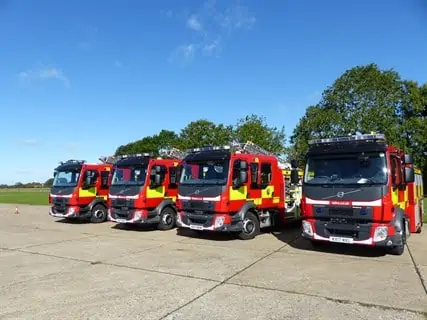Firefighters and paramedics are joining forces to deliver faster response, reduced damage and improved outcomes for Thames Valley residents.

Ambulance crews across the country face a common problem when responding to an emergency 999 call for help. It is not uncommon for them to arrive and find that the resident, incapacitated by injury or illness, cannot reach their door.
Previously paramedics have turned to police colleagues to force entry to a locked property so they can provide vital first aid care. However, a year-long trial across Thames Valley has demonstrated that involving firefighters in the first-call attendance can result in faster response times, less damage to property, and most importantly, improved outcomes for residents requiring emergency medical treatment.
In a collaboration involving the three fire and rescue services of Thames Valley, alongside South Central Ambulance Service and Thames Valley Police it was identified that fire crews are trained to achieve safe, quick, effective access in situations where buildings are locked tight. Using equipment carried on their vehicles, they can help reduce the damage that forcing an entry can cause.
Over the twelve-month period of the trial, fire crews responded to 626 Thames Valley incidents where enabling entry was required, with an average response time of nine minutes. As soon as the crews had gained access, unless their assistance was required further at that incident, they were placed on standby ready to respond to the next emergency call.
South Central Ambulance Service crews have seen a reduction in time spent waiting to enter properties and this, alongside quicker intervention, has led to faster re-deployment of their crews during the recent trial.
Thames Valley Police has also seen a benefit. It has estimated that as a result of the fire service involvement, more than 200 hours of police time has been saved. This has not only generated a financial saving but importantly allowed for resource to be freed up to prevent, respond to and investigate crime across the Thames Valley.
Grahame Mitchell, Deputy Chief Fire Officer, Oxfordshire County Council’s Fire and Rescue Service – speaking on behalf of the Thames Valley Partnership – said: “By working together, this initiative sees our firefighters helping open the door to specialist treatment and care more efficiently and more effectively than emergency services have been able to before. It is another example of where joint partnership working can save valuable time and could save lives, helping to deliver improved outcomes for the communities we all serve.”
Mark Ainsworth, from South Central Ambulance Service, said: “We welcome the findings of this trial and are keen to move forward in looking at ways to make this a more established way of working.
“In many cases, the faster the response and initiation of appropriate treatment, the more positive the outcome and the quicker the recovery time for the patient. People often need immediate medical intervention and in extreme cases, a delay can be the difference between life and death.
“With their access to equipment which enables safe, quick access to a locked building, firefighters are helping our paramedics and emergency first response teams provide ill and injured residents with quicker access to the specialist treatment and care they need.”
The benefits of this new collaborative approach have already improved patient outcomes, freed up police time, enabled ambulance personnel to access and treat patients more effectively, and enabled them to be available sooner for other medical emergencies.
A Memorandum of Understanding, which outlines the next steps of this new partnership arrangement, has been signed by the three chief fire officers across the Thames Valley, along with the Thames Valley Police Chief Constable and Chief Executive of South Central Ambulance Service.